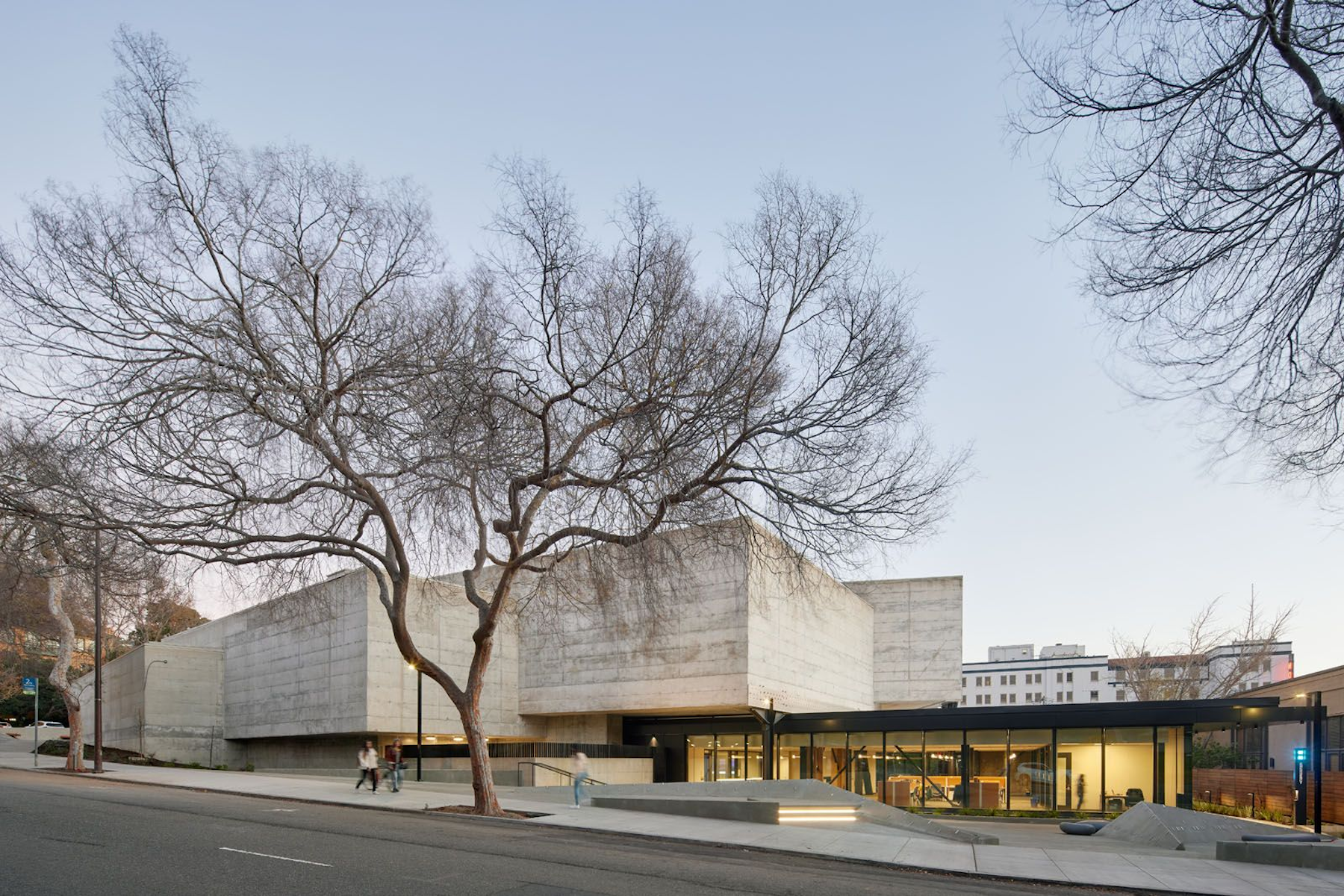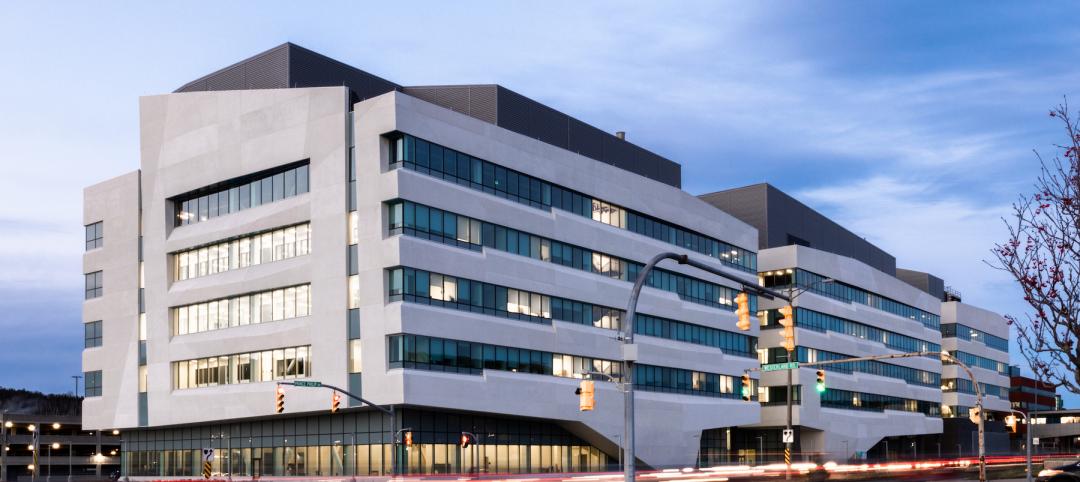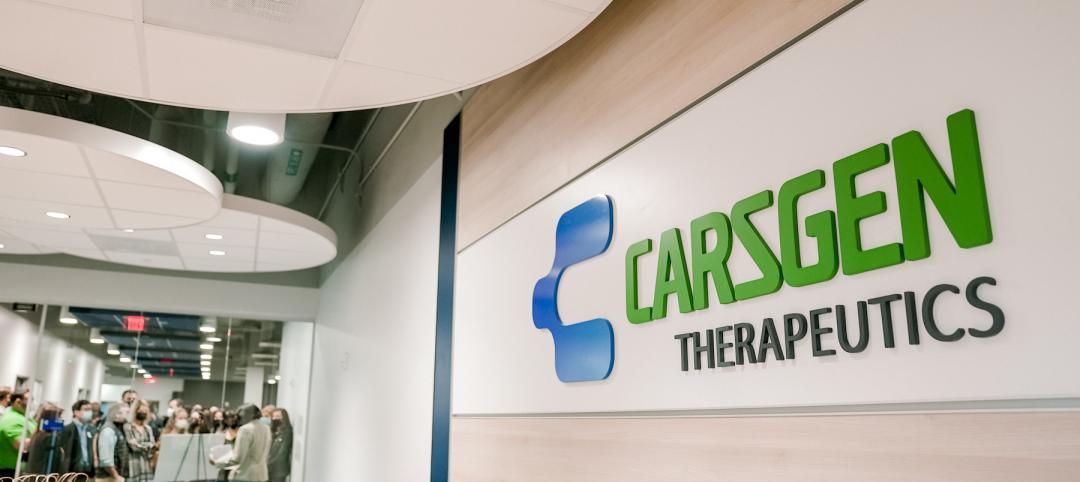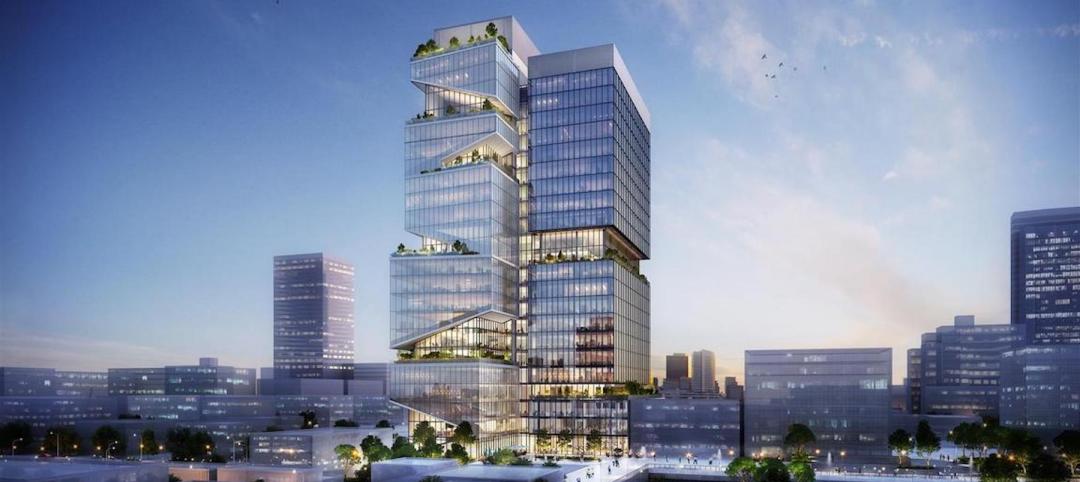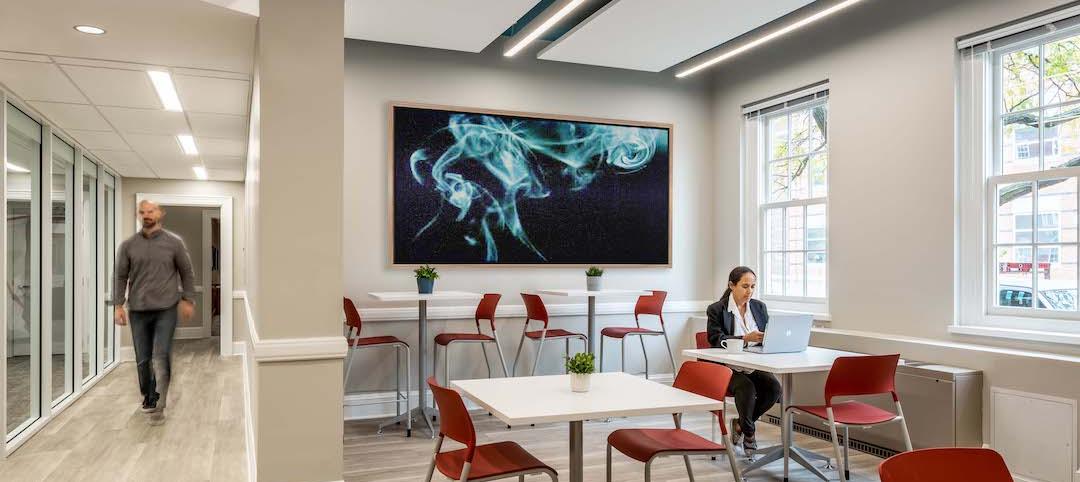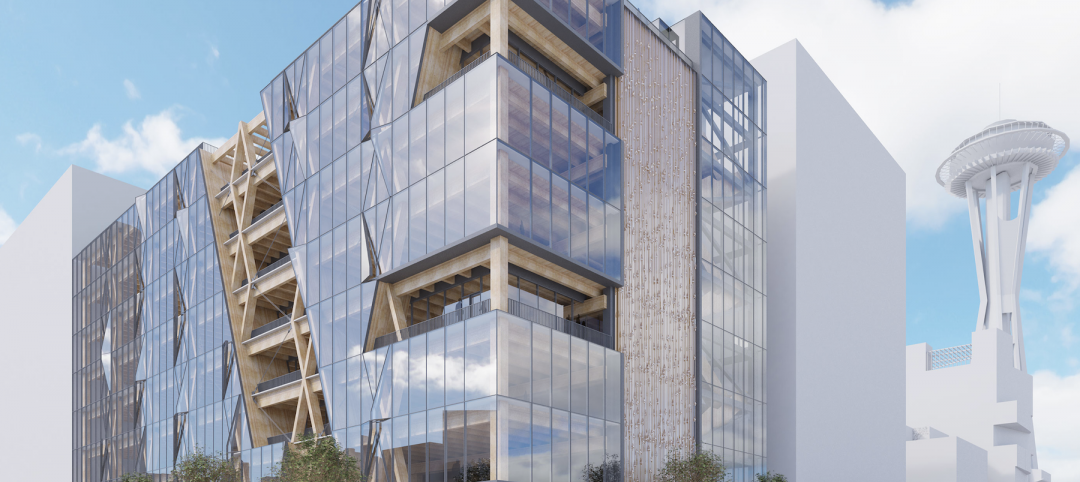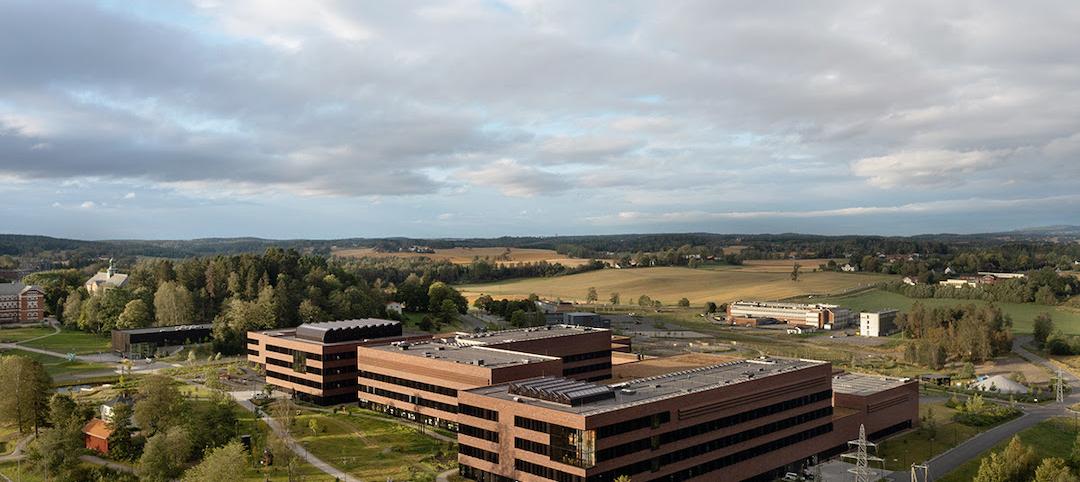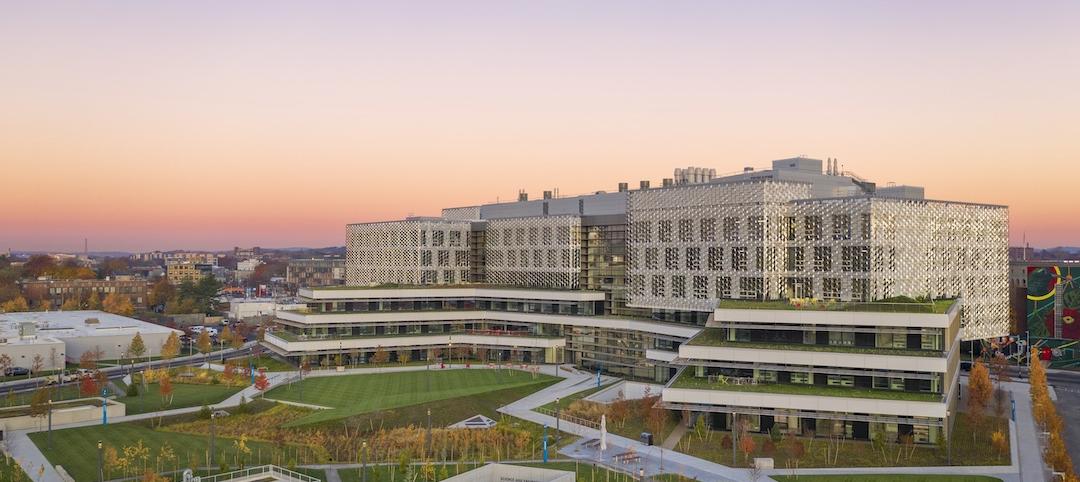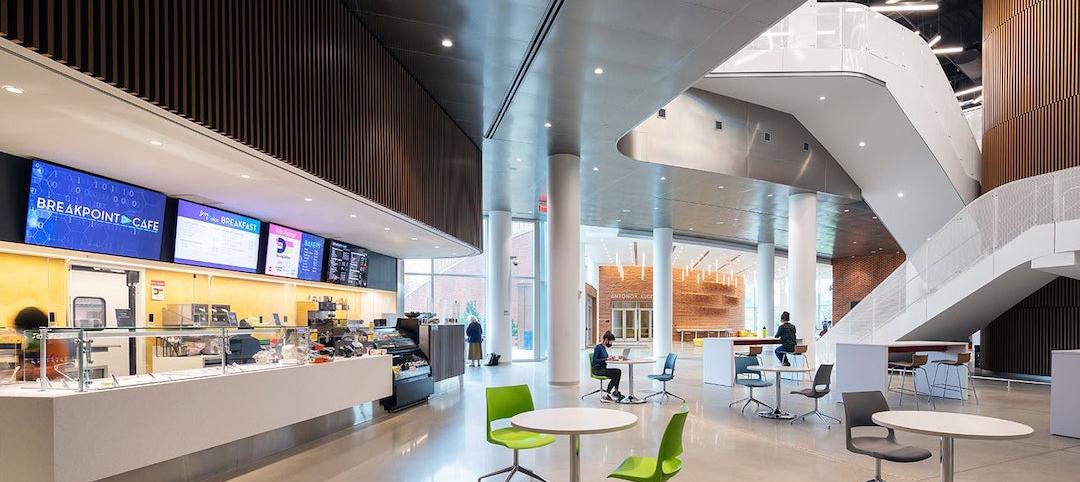After extensive renovation and an addition, the former Berkeley Art Museum and Pacific Film Archive at the University of California, Berkeley campus reopened in May 2022 as a modern life science lab building. The brutalist-style, historically significant structure, designed by Mario Ciampi, had been vacated in 2014 after being deemed seismically unsafe. MBH Architects, first brought on for a feasibility study, designed the renovations needed to make the building well-suited for life science laboratories while preserving the structure’s historical significance.
The design for the Bakar BioEnginuity Hub includes a glass-fronted addition and two new public plazas, as well as well-equipped research space, which is often cost-prohibitive for the young companies the facility will accommodate. MBH identified four major challenges to renovating the structure to satisfy the life science requirements:
- Upgrading structural performance to the current code
- Designing a life science and coworking program to fit within the building’s irregular geometry
- Addressing life safety and substantial mechanical modernization
- Performing renovations and upgrades while preserving the building’s historical character
Seismic performance, water intrusion, and acoustic performance, were addressed while bringing the building up to code. Mechanical, electrical, and plumbing infrastructure was overhauled, including the replacement of existing gas service with all-electric systems. This allowed the project to achieve low EUI, operational carbon neutrality, and Net-Zero HVAC water-use, as well as to meet LEED Gold requirements. Because the building is nearly all concrete, including floors, walls, and ceilings, the team was challenged to make all upgrades, including new modern lighting while minimizing the amount of cutting of the original structure.
Programmatic elements include a laboratory, open office areas, collaboration spaces, private offices, conference rooms, an auditorium, an undergraduate program area, terraces, and public outdoor spaces. The former museum’s upper-level galleries became glass-fronted labs that overlook dramatic cantilevered ramps hanging within a sky-lit double height space. These ramps and other parts of the museum’s circulation system that once led visitors from gallery to gallery have been preserved to foster interaction between groups of people who might not otherwise have an occasion to converse. This attribute furthers the university’s goal of encouraging innovation among scientists.
To spiff up what could otherwise be sterile-looking lab spaces, the design team infused the labs with liveliness by making walls brightly colored and importing natural light by uncovering and replacing skylights that had been covered to protect artwork from ultraviolet light damage. Workspaces and common area materials provide forms that contrast and complement the original structure and provide a welcoming environment.
On the Building Team:
Architect/Designer: MBH Architects
Structural Engineer: Forell | Elsesser
MEP: PAE
Historical Consultant: Page and Turnbull
Acoustics Consultant: Salter Associates
Lab Consultant: ZGF Architects
Civil Engineer: Luk & Associates
Landscape Architects: Jett Landscape Architecture + Design
General Contractor: Plant Construction
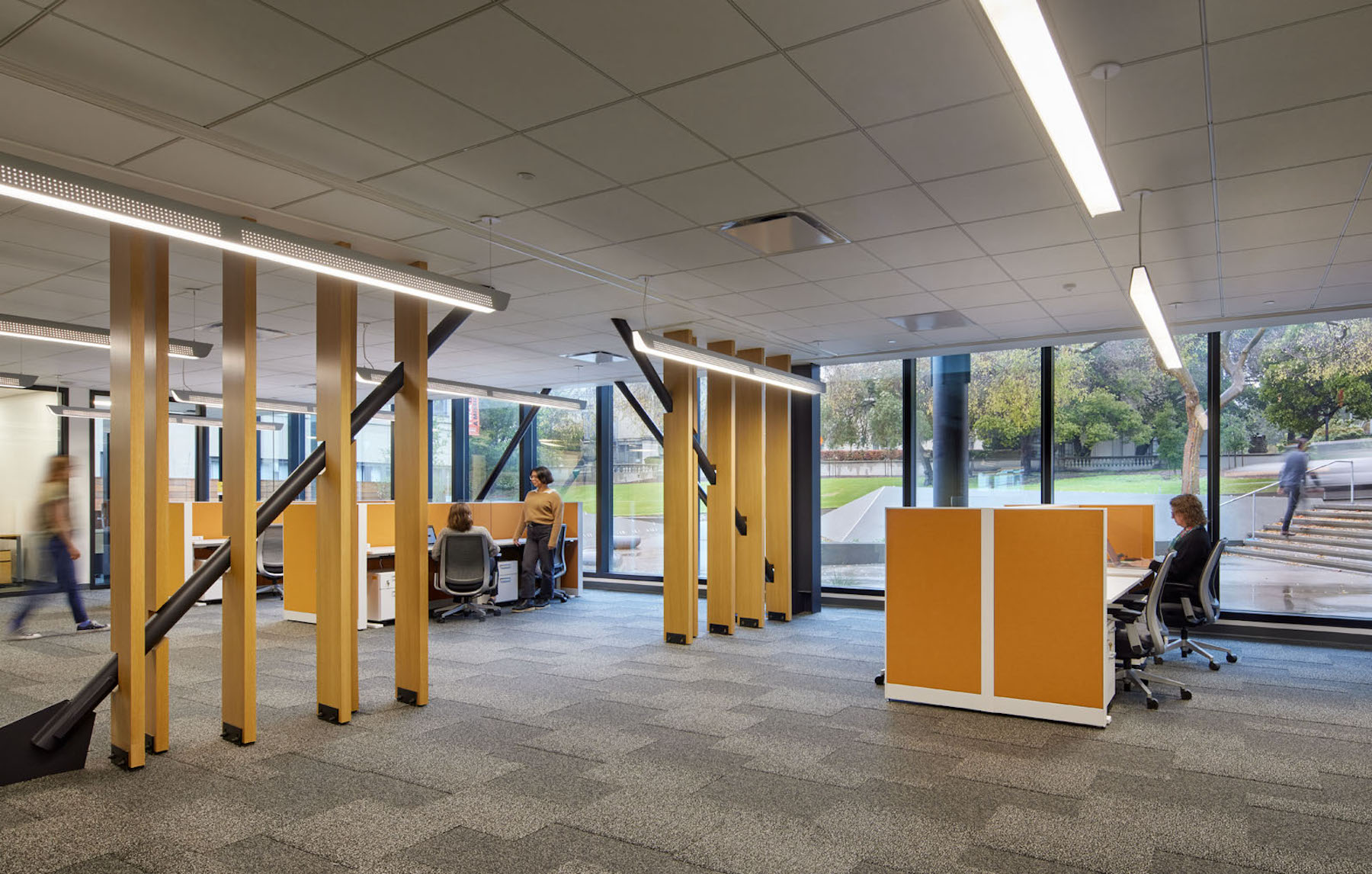
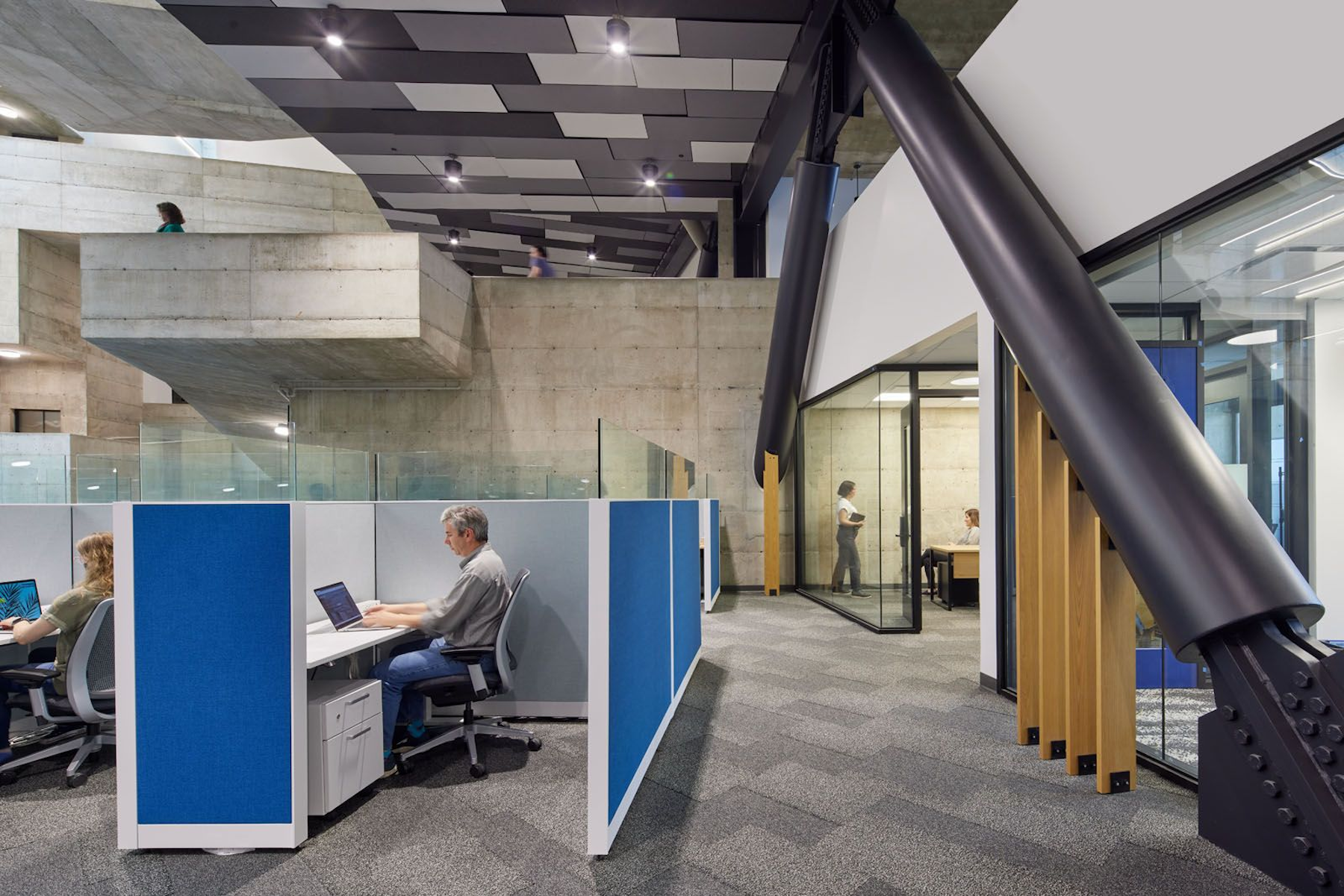
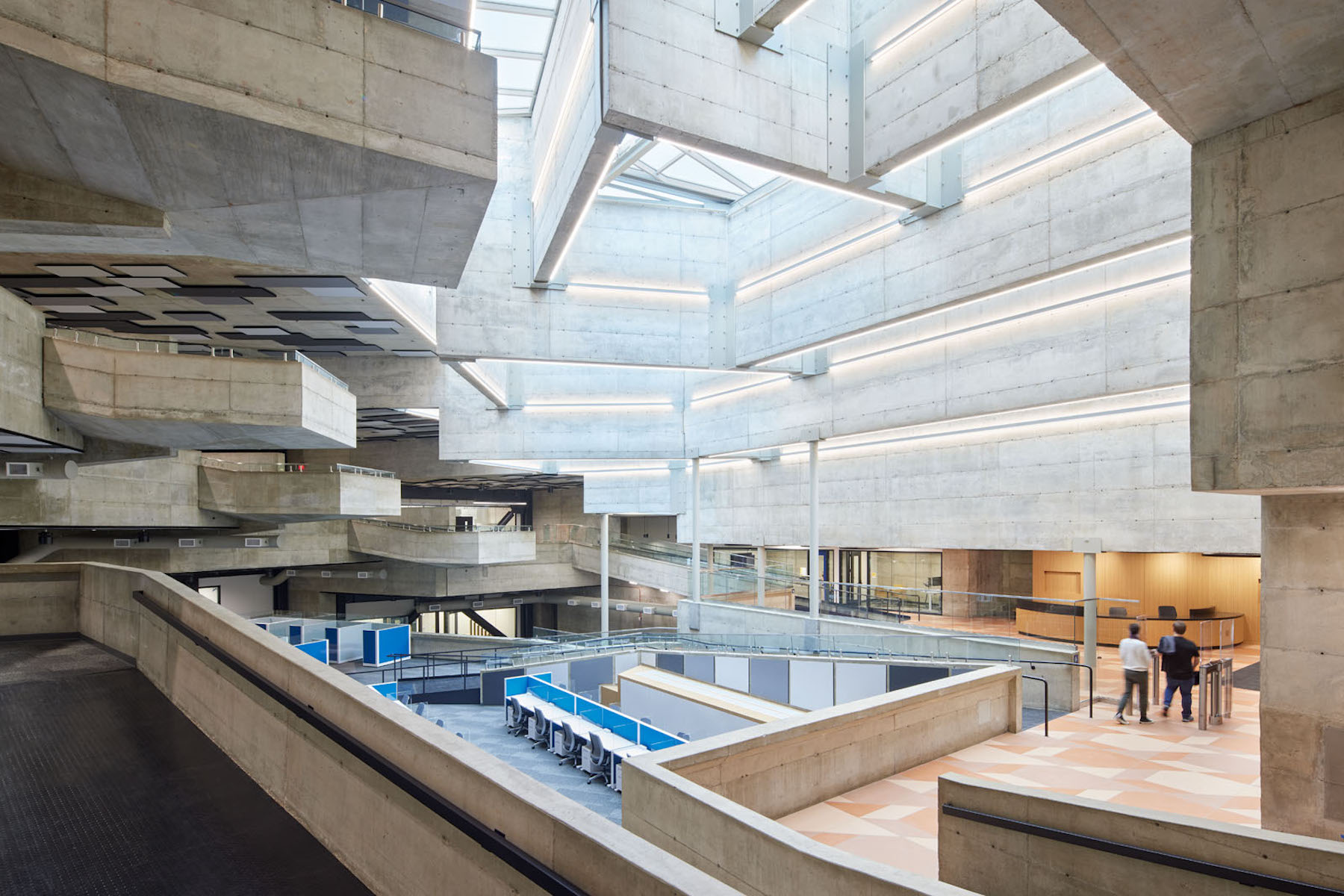
Related Stories
University Buildings | Jun 7, 2022
Newfoundland university STEM building emulates natural elements, local traditions
Memorial University of Newfoundland (MUN) recently opened a new building that will provide interdisciplinary learning and research space for Faculties of Science and Engineering.
Laboratories | Apr 29, 2022
Oracle Industry Lab in Chicago enables development of solutions for multiple industries
The Oracle Industry Lab in Chicago, which provides customers in multiple industries the opportunity to test new technologies, recently opened.
Laboratories | Apr 7, 2022
North Carolina's latest play for biotech real estate development
The Tar Heel State is among a growing number of markets rolling out the welcome mat for lab spaces.
Projects | Mar 11, 2022
Studying science in the sky
In sharp contrast to other types of commercial real estate, the life sciences market is booming, according to SGA, an architecture firm based in Boston and New York that has extensive experience designing life sciences buildings.
Laboratories | Feb 10, 2022
Historic building becomes a research science incubator
Svigals + Partners designed the project.
Laboratories | Feb 8, 2022
A new concept for science buildings emphasizes construction speed and design flexibility
The NEXT prototype—devised by Gensler, KPFF, and Buro Happold—also leans toward decarbonization and wellness.
Laboratories | Feb 3, 2022
New veterinarian building is Norway’s largest ever development in the university sector
The project is one of the largest and most complex ever undertaken in Norway.
Laboratories | Jan 28, 2022
3 must-know strategies for developers in today’s life sciences industry
While the life sciences industry had been steadily growing, this growth exploded when the pandemic arrived—and there is no indication that this lightning-fast pace will slow down any time soon.
Laboratories | Jan 17, 2022
A health crisis gives life to life sciences
Construction and renovation projects are heaviest in markets with consistent talent streams.
University Buildings | Jan 11, 2022
Designing for health sciences education: supporting student well-being
While student and faculty health and well-being should be a top priority in all spaces within educational facilities, this article will highlight some key considerations.


